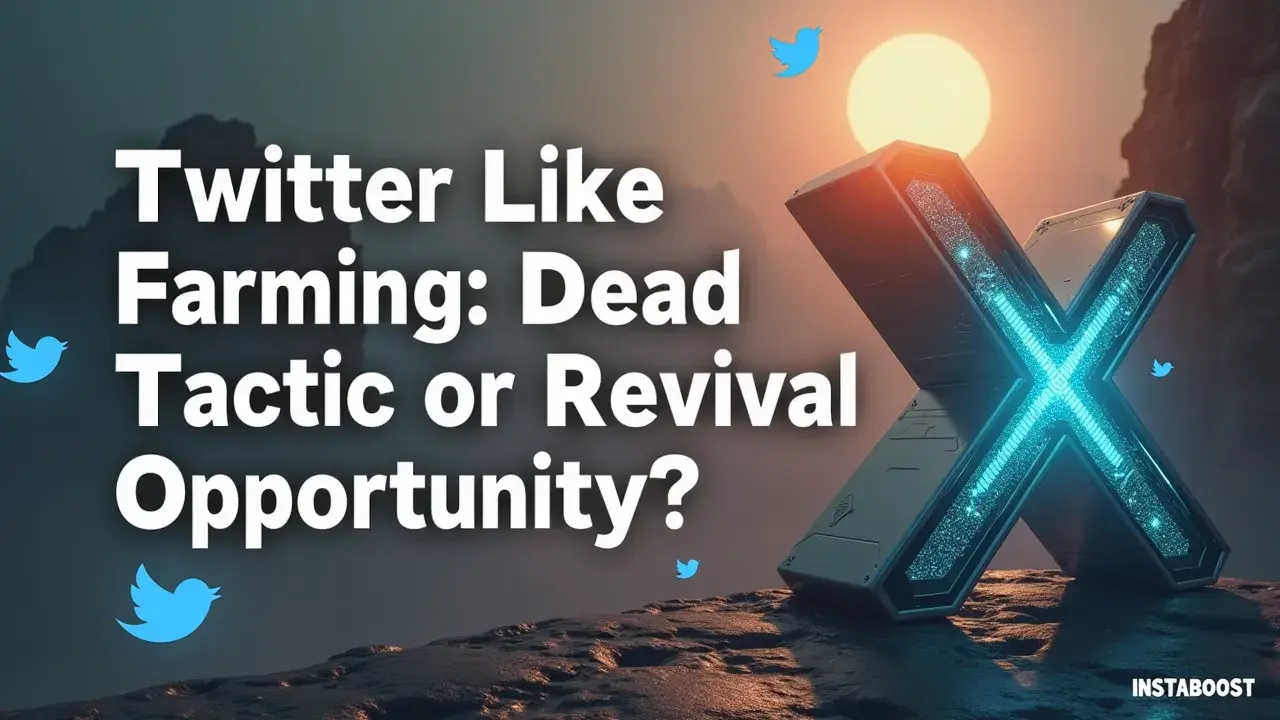Twitter Like Farming: Dead Tactic or Revival Opportunity?
Like farming is limited when misused but can evolve with intent and context. On X (Twitter), tactics that chase empty metrics often stagnate, while engagement that prompts conversation or shares aligns better with the platform’s shifting culture. Results hinge on relevance, authenticity, and how interactions ripple into replies and follows, not just raw likes. Aim for content that fits community norms and sparks credible dialog to convert attention into durable engagement.
The Strange Persistence of Like Farming on X
If you spend some time on X (what used to be Twitter), you’ll still run into those old tactics – posts promising giveaways if you retweet, or obvious questions meant to pull in as many replies as possible. It’s easy to roll your eyes at this stuff and think it’s from another era, back when everything online seemed a little more naïve. But there’s more going on here.
The old tricks aren’t as effective as they used to be, but the reasons they worked in the first place haven’t really disappeared. People still want recognition, a bigger audience, or maybe a way to feel like they matter online, even if it’s in a small way. Platforms have gotten better at spotting and hiding the most blatant attempts at gaming the system, but users adapt – they try new methods, sometimes less obvious, to get the same result.
What stands out is how the platform and the people using it keep shaping each other. The specifics of engagement farming might change, but the desire for approval, attention, or influence is always there, whether someone’s trying to build up their business, grow a following, or just watch the numbers go up for a moment.
There’s even a whole cottage industry around trying to boost those numbers, with people swapping tips or mentioning sites where you can buy X promotion tools, as if there’s always another shortcut. With X constantly shifting, it’s hard to say if these tactics will ever really go away, or if they’ll just become harder to spot. And maybe that’s why social media keeps pulling people in – there’s always this undercurrent of wanting to be seen, even if the ways we chase it keep changing.
There’s even a whole cottage industry around trying to boost those numbers, with people swapping tips or mentioning sites where you can buy X promotion tools, as if there’s always another shortcut. With X constantly shifting, it’s hard to say if these tactics will ever really go away, or if they’ll just become harder to spot. And maybe that’s why social media keeps pulling people in – there’s always this undercurrent of wanting to be seen, even if the ways we chase it keep changing.

The Science (and Stumble) Behind Engagement Bait
We tried posting the same thing eight times, and only one actually got any traction. It wasn’t even the clever one, which is the sort of thing that gets under your skin. That’s the reality of like farming on X now – most posts that catch on don’t follow any clear pattern. You still see engagement bait on your feed, those “like to win” or “retweet if you agree” posts, but success isn’t a given.
The algorithm catches onto gimmicks, and people are quick to notice when something feels recycled. The platform itself seems to filter out the more obvious attempts, so you don’t get those big bursts of attention as easily. Even so, people keep trying because there’s something about the chance of being noticed, or maybe just wanting to take part in whatever everyone else is doing. I’ve even seen people mention things like how they managed to expand your X network through all sorts of experiments, but ironically, when INSTABOOST tried every angle – emotional hooks, jokes, and straightforward bait – the only one that worked was the plain, unpolished one.
And even then, it felt random, not like the result of a particular trick. These days, it’s less about having a clever tactic and more about being tuned into what’s happening at the moment, what actually matters to people, and being straightforward. The idea that there’s a secret formula for engagement doesn’t really hold up.
What gets attention seems to shift all the time, and like farming hangs around mostly because it’s familiar, even if it pays off less and less. There’s still this sense that with the right post, at the right time, you might hit on something, but it’s hard to know where that line is anymore.
What gets attention seems to shift all the time, and like farming hangs around mostly because it’s familiar, even if it pays off less and less. There’s still this sense that with the right post, at the right time, you might hit on something, but it’s hard to know where that line is anymore.
Turning Old Tricks into Strategic Playbooks
I’ve noticed that having some kind of structure is really what keeps things moving, even on days when you feel burned out or uninspired. Take like farming on X – it’s not exactly the most admired strategy, but I think the bigger issue is when people keep using the same old engagement tricks without much thought. If you actually step back and build a plan around it, though, things start to feel different.
Instead of just aiming for another spike in likes, you can look at like farming as a way to actually learn something about the people following you. For example, you can pay attention to which types of prompts actually start real conversations, instead of only looking at how many times something gets shared or liked. Timing matters too, and so does the way you ask questions. I try to focus on the replies – seeing if people are engaging with the idea or just dropping a quick emoji. The social media managers I talk to now rely on routines that balance data and some honest experimentation, so even the older approaches can teach you something new if you’re willing to adjust.
At INSTABOOST, some clients who’ve been open to reworking familiar tactics – like switching up how they run question threads or being straightforward about asking for engagement – have ended up with smaller but much more real conversations. That’s usually where you start to see a real sense of community, even if the numbers aren’t as flashy.
I don’t think like farming is useless now; it’s just that you have to approach it with more intention, since people and platforms are always shifting. There are even entire micro-economies around things like instant delivery likes on X, but the real value seems to come from being responsive and willing to adapt. Sometimes, a tactic isn’t really outdated, it’s just waiting for someone to look at it a little differently.
I don’t think like farming is useless now; it’s just that you have to approach it with more intention, since people and platforms are always shifting. There are even entire micro-economies around things like instant delivery likes on X, but the real value seems to come from being responsive and willing to adapt. Sometimes, a tactic isn’t really outdated, it’s just waiting for someone to look at it a little differently.















